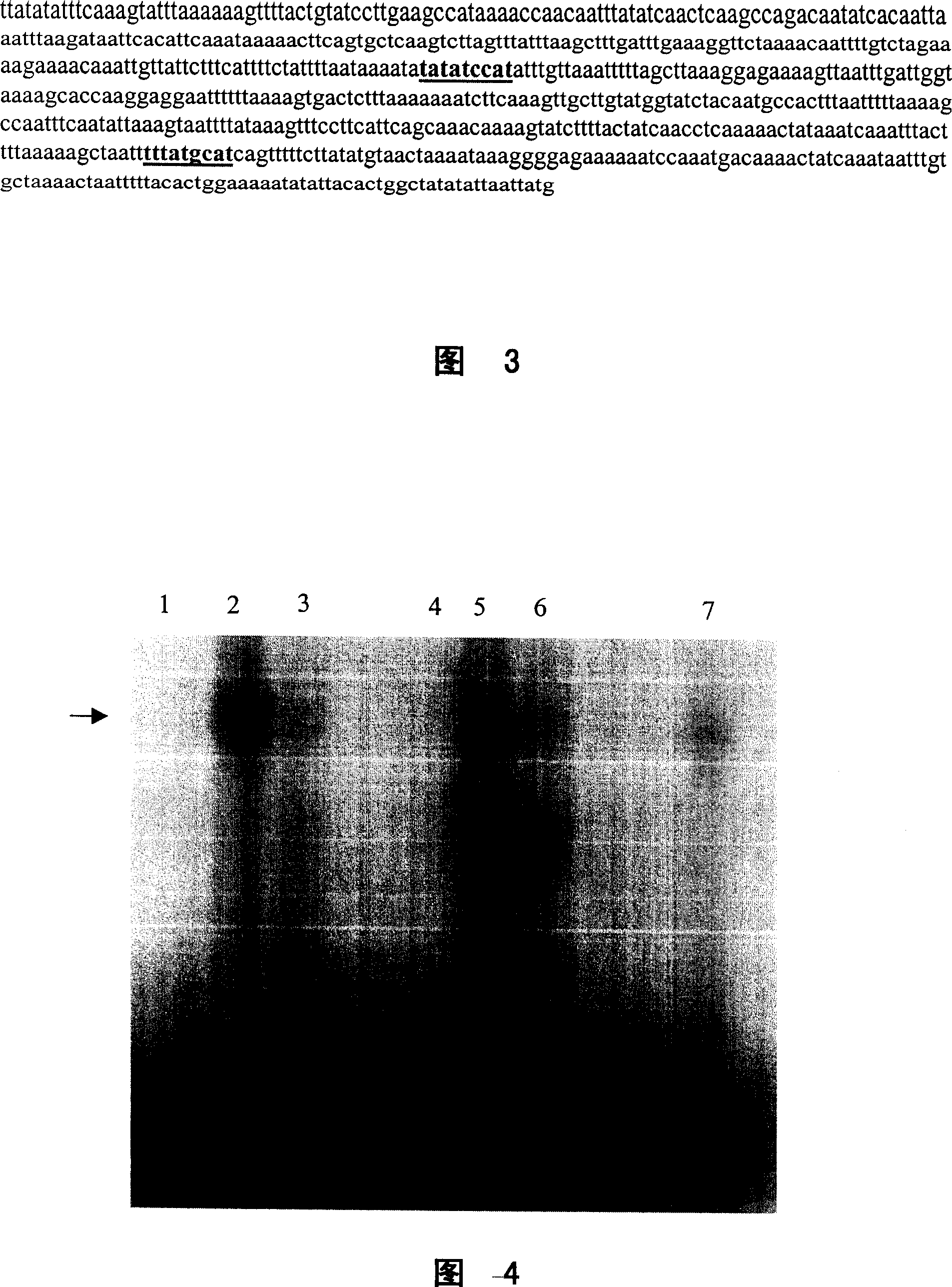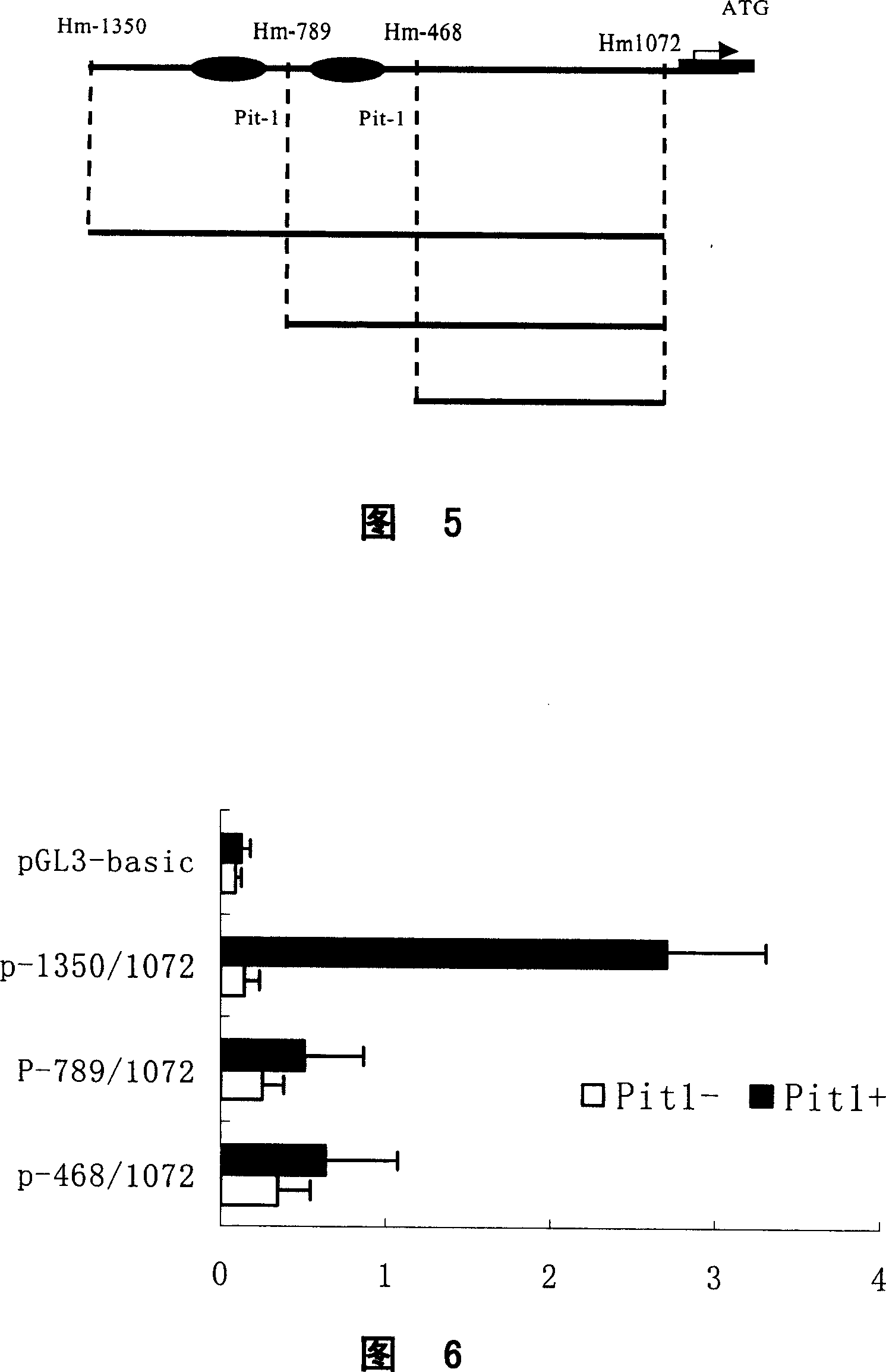Monoclonal antibody for resisting human osteogenesis induction factor and its preparation method and uses
A monoclonal antibody, inducing factor technology, applied in the field of immunology
- Summary
- Abstract
- Description
- Claims
- Application Information
AI Technical Summary
Problems solved by technology
Method used
Image
Examples
Embodiment 1
[0059] Preparation of monoclonal antibodies
[0060] In this example, the inventors used the E. coli system to express and purify OIF, and further prepared OIF-specific monoclonal antibody OIF-KG4, which provided convenience for the further establishment of a detection method for OIF in blood, and was an OIF antibody It is possible to diagnose special types of tumors and lay the foundation for further in-depth study of the physiological function of OIF. The specific process is as follows:
[0061] 1. Materials
[0062] (1) Plasmids, strains and main preparations
[0063] Escherichia coli BL21 and Top10 were purchased from Amersham biosciences. Primer Forward 5′-atc was designed according to AF100758 gga tcc cct gtc aac gca act ctg g-3' (SEQ ID NO: 5), Reverse 5'-atg ctc gag cat tgg ttg agt cct ggg ac-3' (SEQ ID NO: 6), the OIF coding sequence was amplified by PCR, digested with BamH I and Xho I, and cloned into the prokaryotic expression vector pGEX-5X-2 (purchased fro...
Embodiment 2
[0092] Detection of OIF
[0093] Detection by immunohistochemical method. Specifically, New Zealand white rabbits were immunized with GST-OIF protein, and their serum was used as the polyantiserum against OIF and used as the primary antibody. The secondary antibody envision reagent was purchased from DAKO Company. Color was developed with DAB (DAKO company).
[0094] The expression of OIF in 178 cases of lung cancer tissues was detected, and it was found that the expression of OIF was related to the degree of differentiation: the higher the differentiation, the higher the expression. In squamous cell carcinoma tissues, the expression of OIF was almost 100% (Table 3), and the positive rate of SCLC with poor differentiation was the lowest (Table 4). It can be seen that OIF, as a tumor marker of lung cancer, can effectively distinguish small cell lung cancer (SCLC) from non-small cell lung cancer (NSCLC). Helpful for clinicopathological classification.
[0095] ...
Embodiment 3
[0100] Detection of OIF expression with monoclonal antibody OIF-KG4
[0101] The present inventors used the prepared monoclonal antibody OIF-KG4 to detect the expression of OIF, and repeated the method of Example 2, with the difference that the polyclonal antibody in Example 2 was replaced by the monoclonal antibody OIF-KG4 as the primary antibody.
[0102] The results showed that monoclonal antibody OIF-KG4 can also effectively differentiate small cell lung cancer (SCLC) and non-small cell lung cancer (NSCLC). Moreover, the specificity of the monoclonal antibody OIF-KG4 was greatly improved compared with the polyclonal antibody in Example 2, and the affinity was also significantly enhanced.
PUM
 Login to View More
Login to View More Abstract
Description
Claims
Application Information
 Login to View More
Login to View More - R&D Engineer
- R&D Manager
- IP Professional
- Industry Leading Data Capabilities
- Powerful AI technology
- Patent DNA Extraction
Browse by: Latest US Patents, China's latest patents, Technical Efficacy Thesaurus, Application Domain, Technology Topic, Popular Technical Reports.
© 2024 PatSnap. All rights reserved.Legal|Privacy policy|Modern Slavery Act Transparency Statement|Sitemap|About US| Contact US: help@patsnap.com










